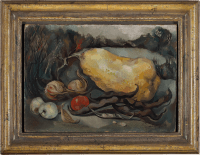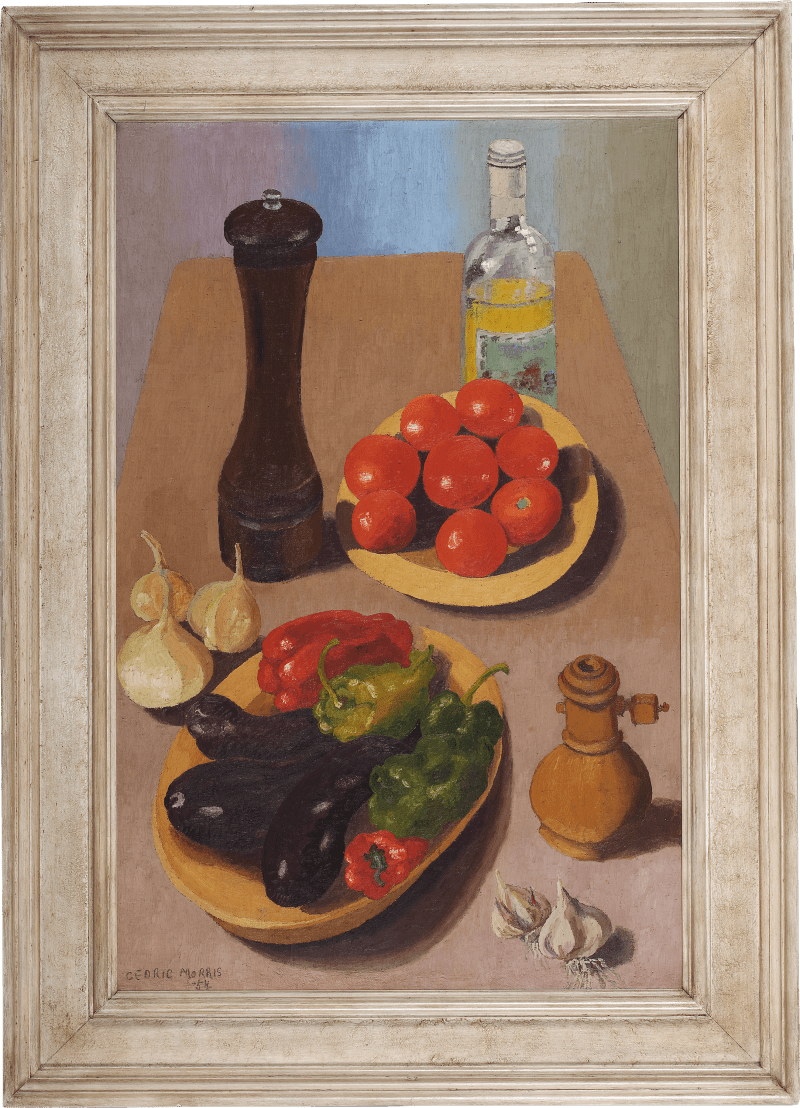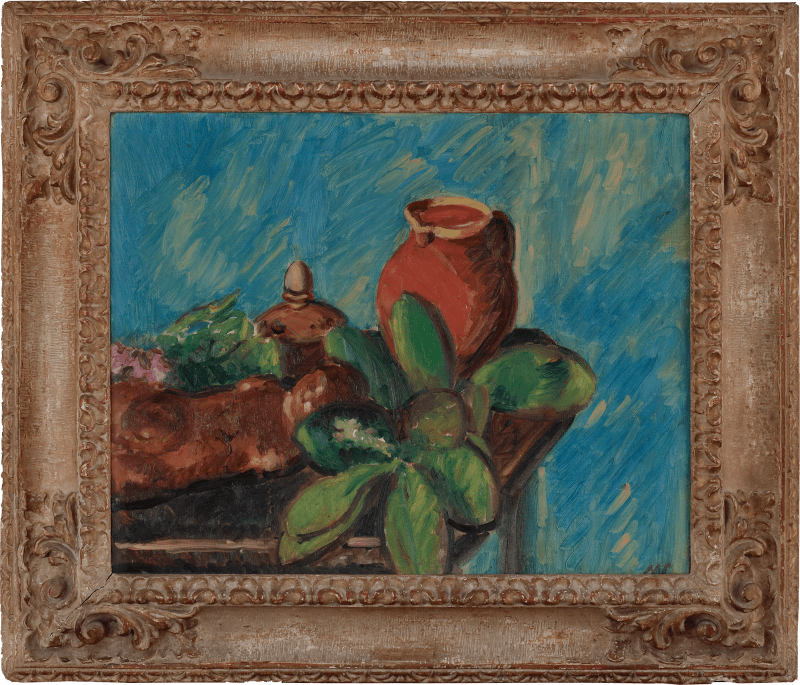Painted in 1943, this still life conveys the sombre atmosphere of wartime Britain. With the memory of the Blitz still fresh and rationing firmly in place, the depiction of everyday produce such as fruit and vegetables assumes a heightened symbolic importance.
Ayrton’s practice, particularly during the war years, shows the deliberate integration of a neo-romantic ethos with elements drawn from Northern European masters.[1] His admiration for artists such as Hieronymus Bosch is discernible in the slightly surreal and somewhat macabre undertones that animate this scene. Like Bosch’s cryptic allegories, Ayrton’s stylised treatment of familiar objects – here, a cluster of vegetables – carries them beyond the realm of realistic representation, charging the composition with layered symbolic potential.
Rendered in a muted, earthy palette, the still life in the foreground transitions seamlessly into the sweeping, dark landscape of the background. This cocoon-like composition, enhanced by Ayrton’s dramatic use of lighting, evokes a sense of enclosure. Though circular landscapes were a...
Painted in 1943, this still life conveys the sombre atmosphere of wartime Britain. With the memory of the Blitz still fresh and rationing firmly in place, the depiction of everyday produce such as fruit and vegetables assumes a heightened symbolic importance.
Ayrton’s practice, particularly during the war years, shows the deliberate integration of a neo-romantic ethos with elements drawn from Northern European masters.[1] His admiration for artists such as Hieronymus Bosch is discernible in the slightly surreal and somewhat macabre undertones that animate this scene. Like Bosch’s cryptic allegories, Ayrton’s stylised treatment of familiar objects – here, a cluster of vegetables – carries them beyond the realm of realistic representation, charging the composition with layered symbolic potential.
Rendered in a muted, earthy palette, the still life in the foreground transitions seamlessly into the sweeping, dark landscape of the background. This cocoon-like composition, enhanced by Ayrton’s dramatic use of lighting, evokes a sense of enclosure. Though circular landscapes were a recurring motif in Ayrton’s oeuvre at this date, few incorporate such detailed still-life elements in the foreground. The sense of melodrama in this work may also reflect Ayrton’s theatrical connections.[2] An accomplished stage designer, between 1942 and 1944 he taught drawing and stage design at the Camberwell School of Art, further honing his understanding of spatial dynamics and dramatic lighting. Beyond visual art, Ayrton was a gifted writer; his novels, essays, and poetry often delved into the same mythological and existential themes that inspired his art.
Ayrton’s reputation has seen a recent revival, thanks to Andrew Lambirth’s 2021 exhibition in collaboration with The Ingram Collection and The Lightbox. The exhibition, which featured this work, has enhanced Ayrton’s recognition and reaffirmed his importance within British art history.
[1] Frances Spalding, (2021) ‘Michael Ayrton was a maker of minotaurs – and is himself a forgotten giant’, Apollo. Available at: https://www.apollo-magazine.com/michael-ayrton-artist-centenary/ (accessed 06.12.2024).
[2] Other examples include Winter Drought, 1944, Fry Art Gallery; The Tip, Hanley, 1945, The Potteries Museum & Art Gallery; Landscape with a Pig, 1946, Southampton City Art Gallery.













